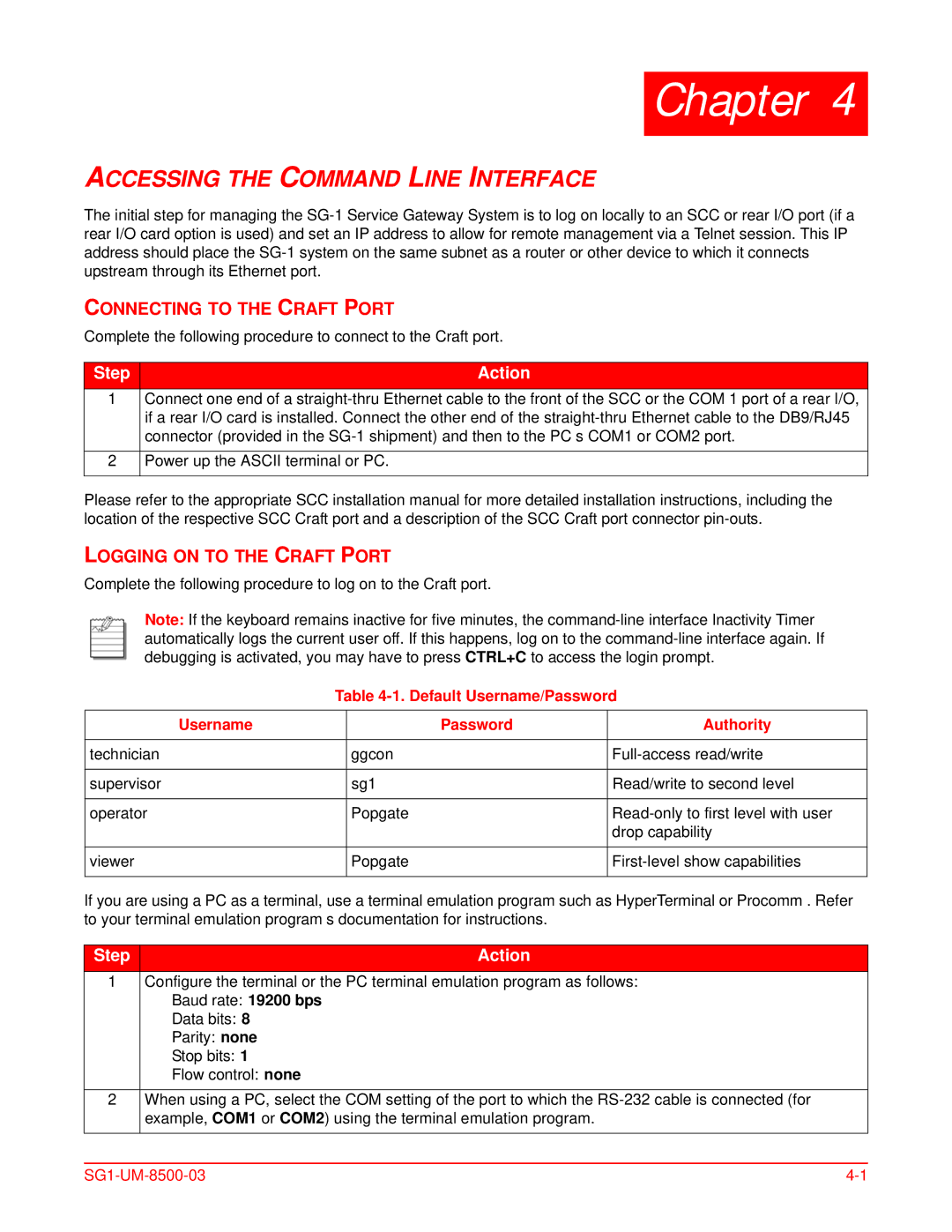
Chapter 4
ACCESSING THE COMMAND LINE INTERFACE
The initial step for managing the
CONNECTING TO THE CRAFT PORT
Complete the following procedure to connect to the Craft port.
Step | Action |
1Connect one end of a
2Power up the ASCII terminal or PC.
Please refer to the appropriate SCC installation manual for more detailed installation instructions, including the location of the respective SCC Craft port and a description of the SCC Craft port connector
LOGGING ON TO THE CRAFT PORT
Complete the following procedure to log on to the Craft port.
Note: If the keyboard remains inactive for five minutes, the
Table 4-1. Default Username/Password
Username | Password | Authority |
|
|
|
technician | ggcon | |
|
|
|
supervisor | sg1 | Read/write to second level |
|
|
|
operator | Popgate | |
|
| drop capability |
|
|
|
viewer | Popgate | |
|
|
|
If you are using a PC as a terminal, use a terminal emulation program such as HyperTerminal or Procomm™. Refer to your terminal emulation program’s documentation for instructions.
Step |
| Action |
1 | Configure the terminal or the PC terminal emulation program as follows: | |
| • | Baud rate: 19200 bps |
| • | Data bits: 8 |
| • | Parity: none |
| • | Stop bits: 1 |
| • | Flow control: none |
|
| |
2 | When using a PC, select the COM setting of the port to which the | |
| example, COM1 or COM2) using the terminal emulation program. | |
|
|
|
